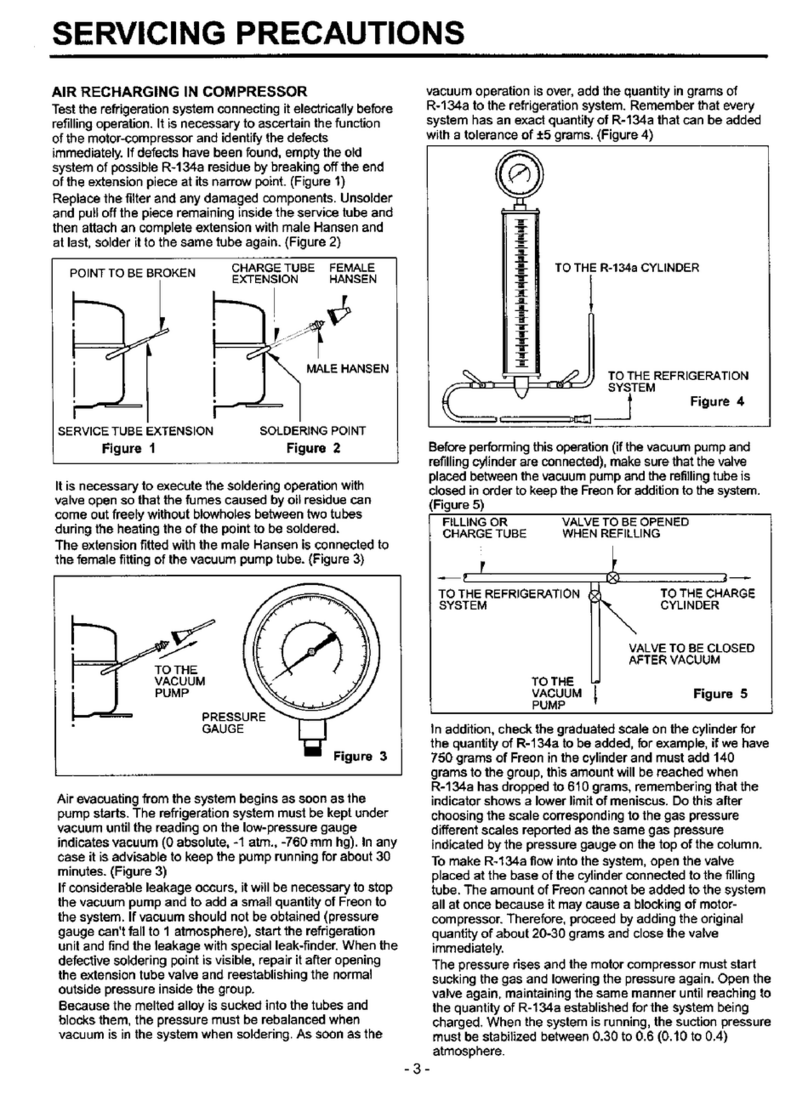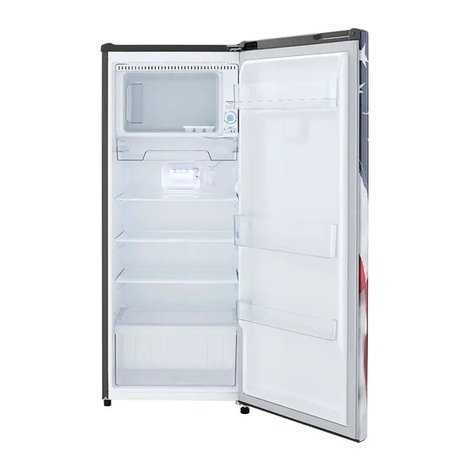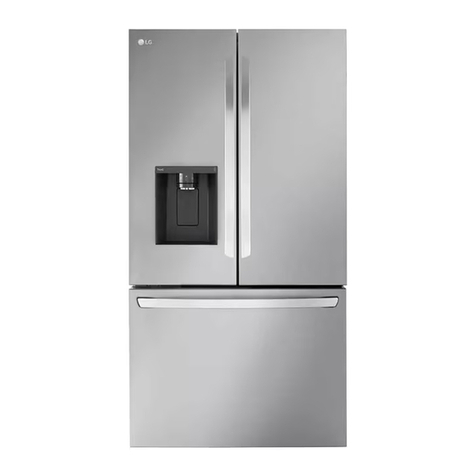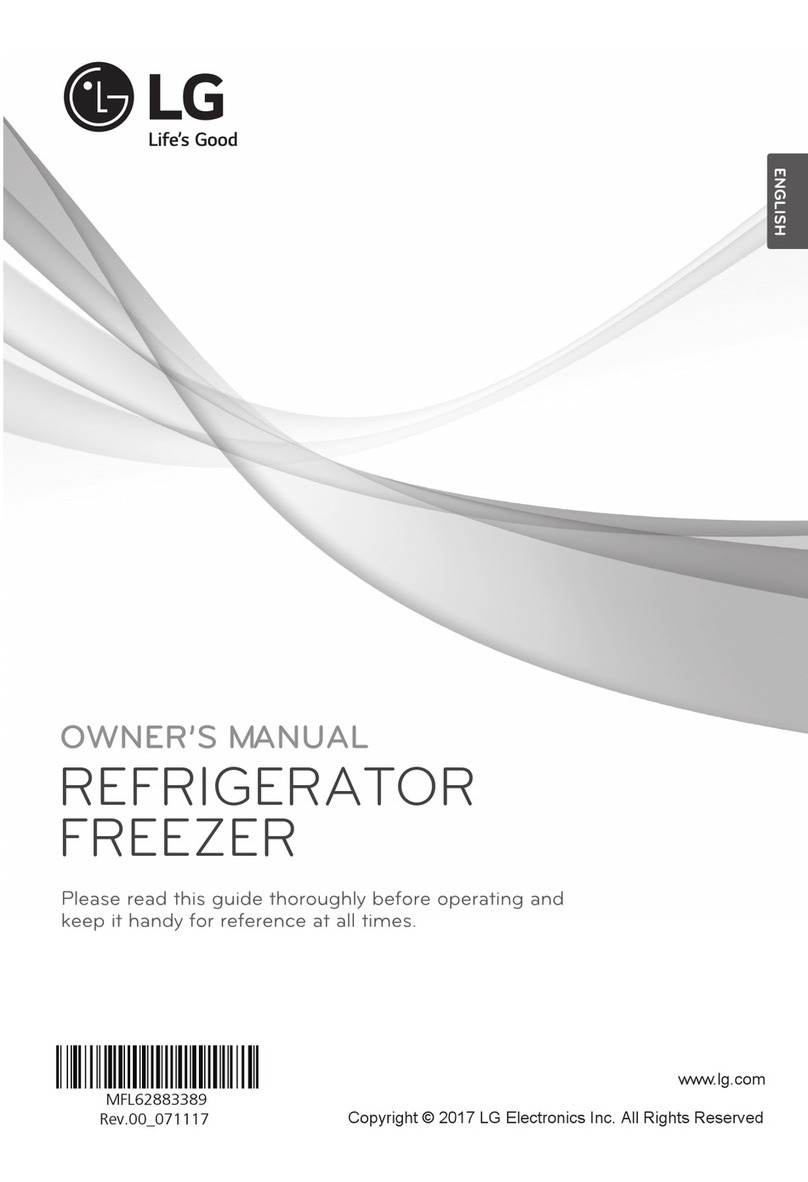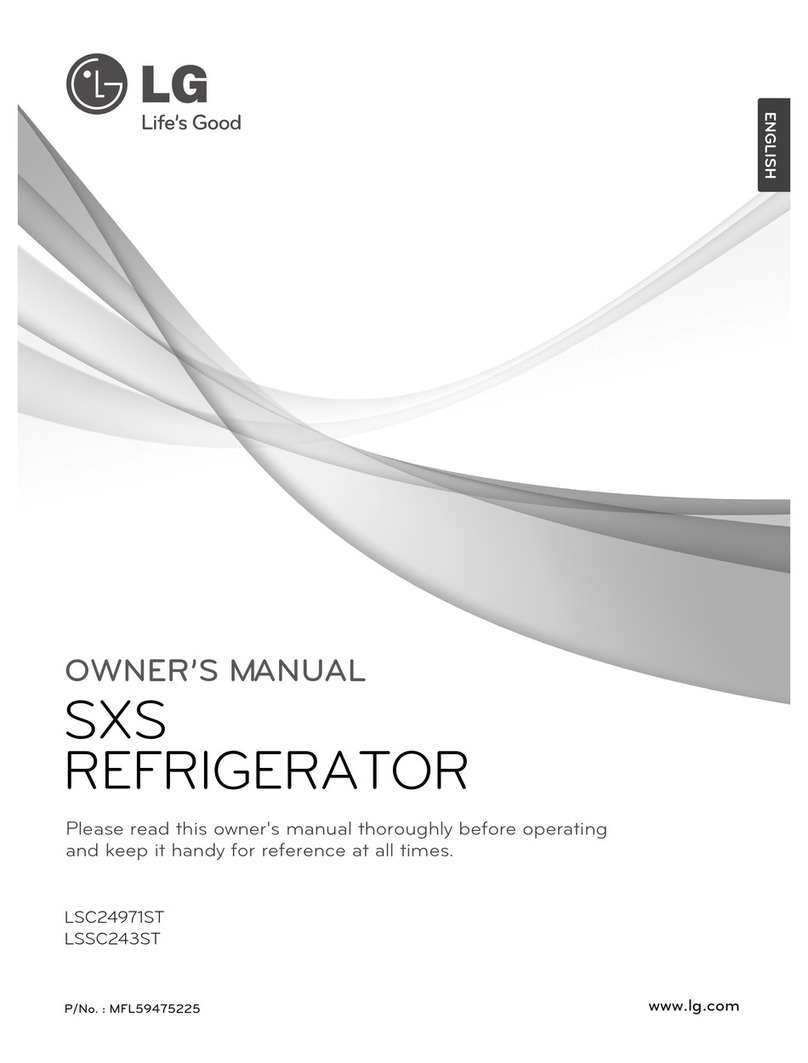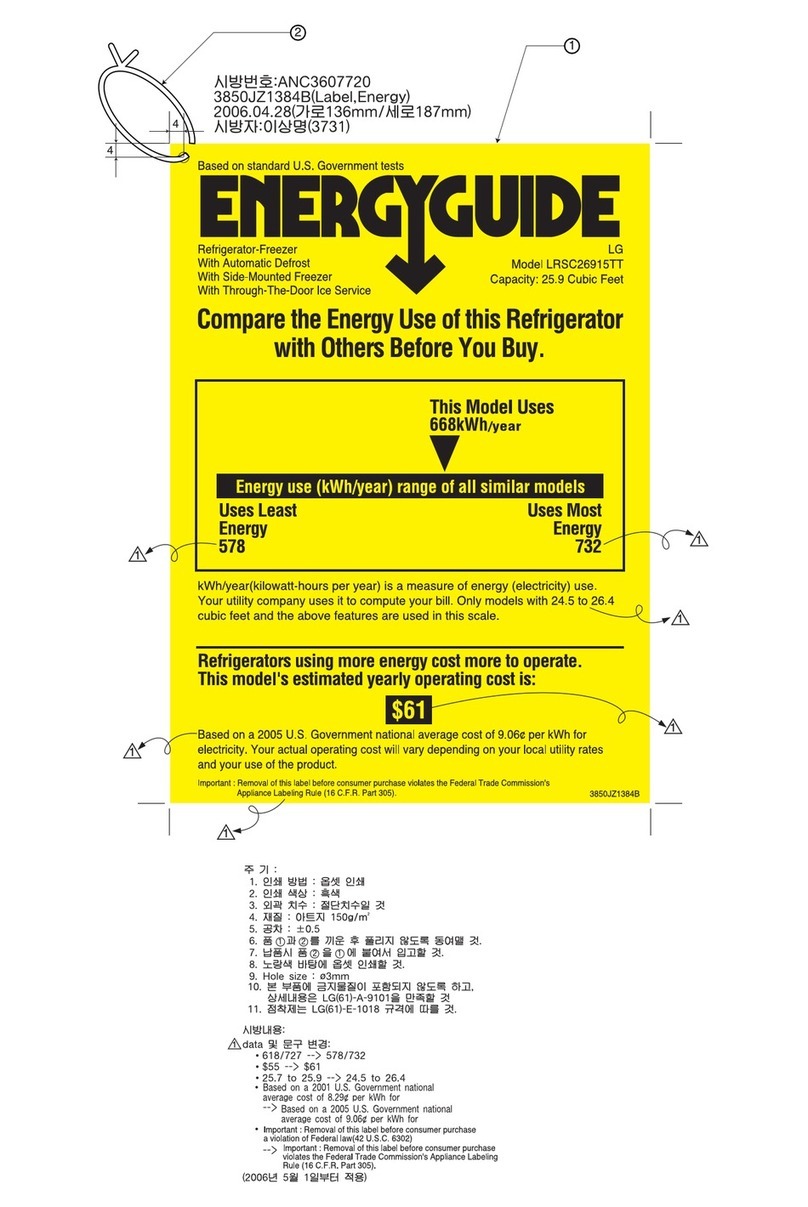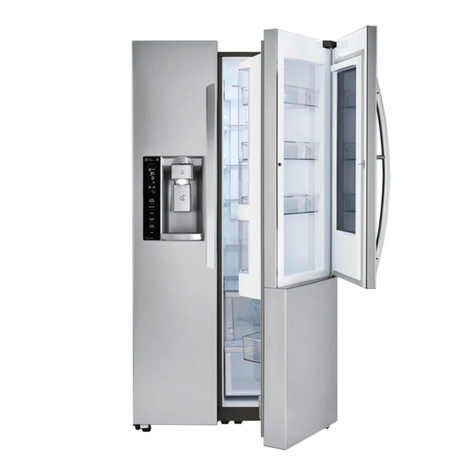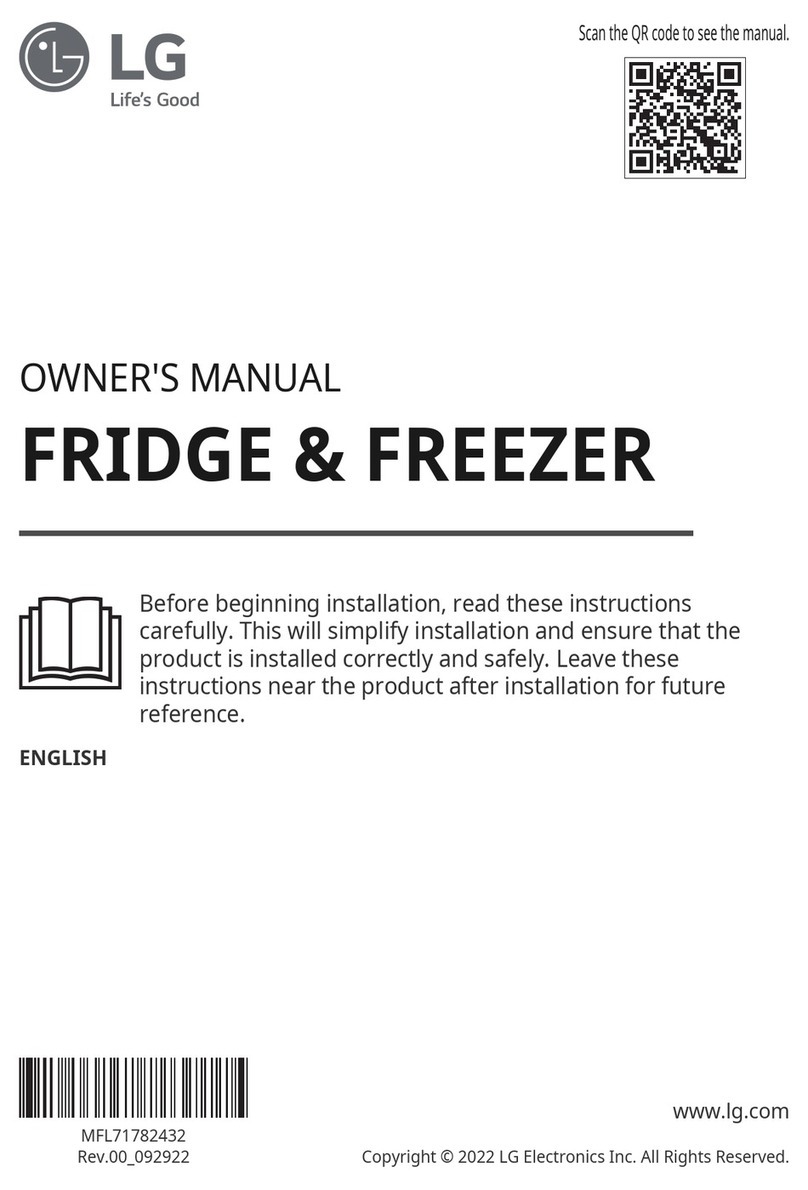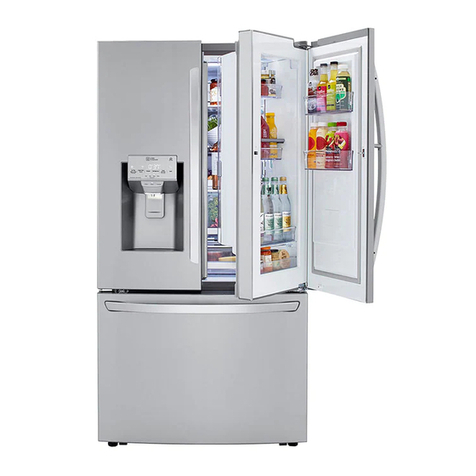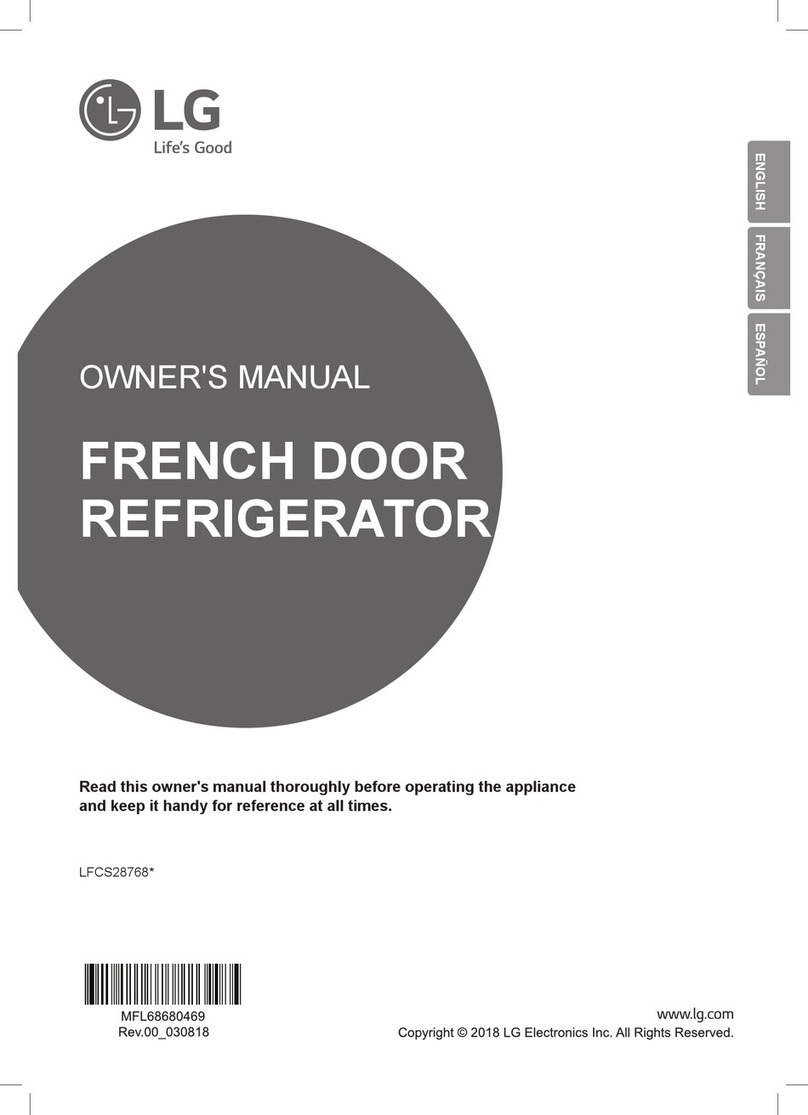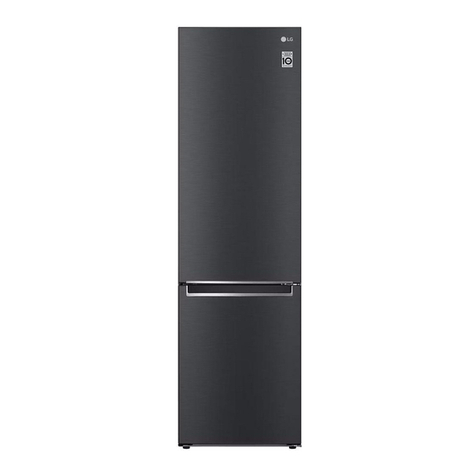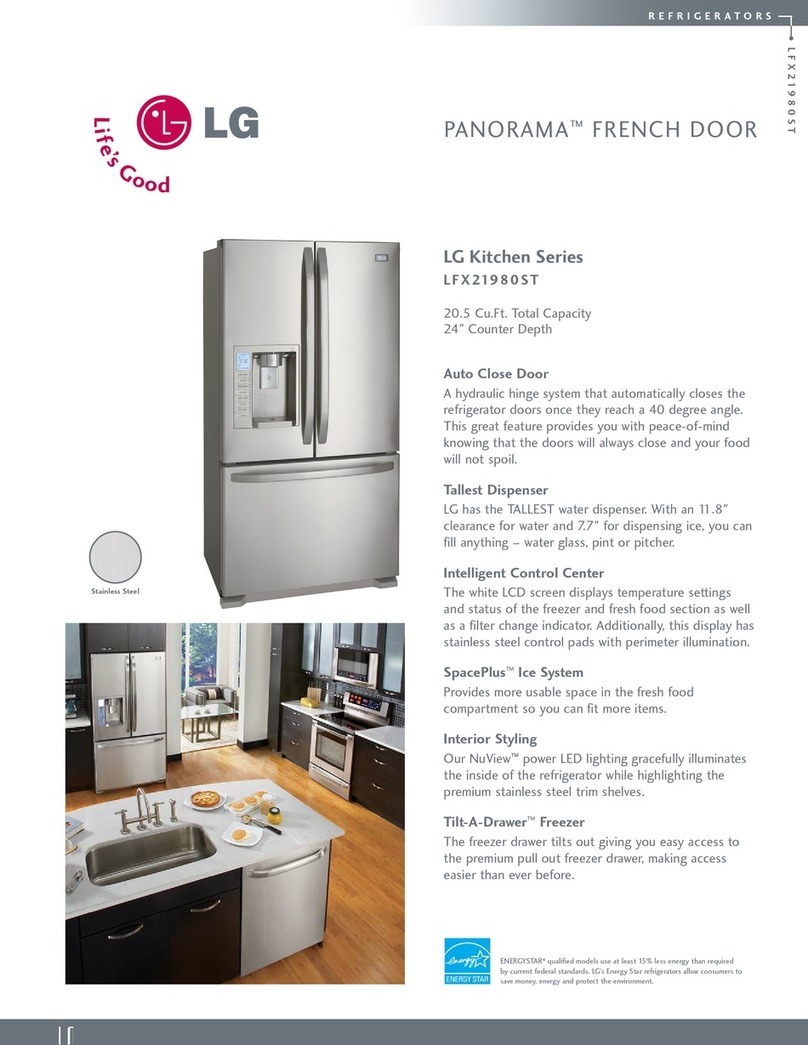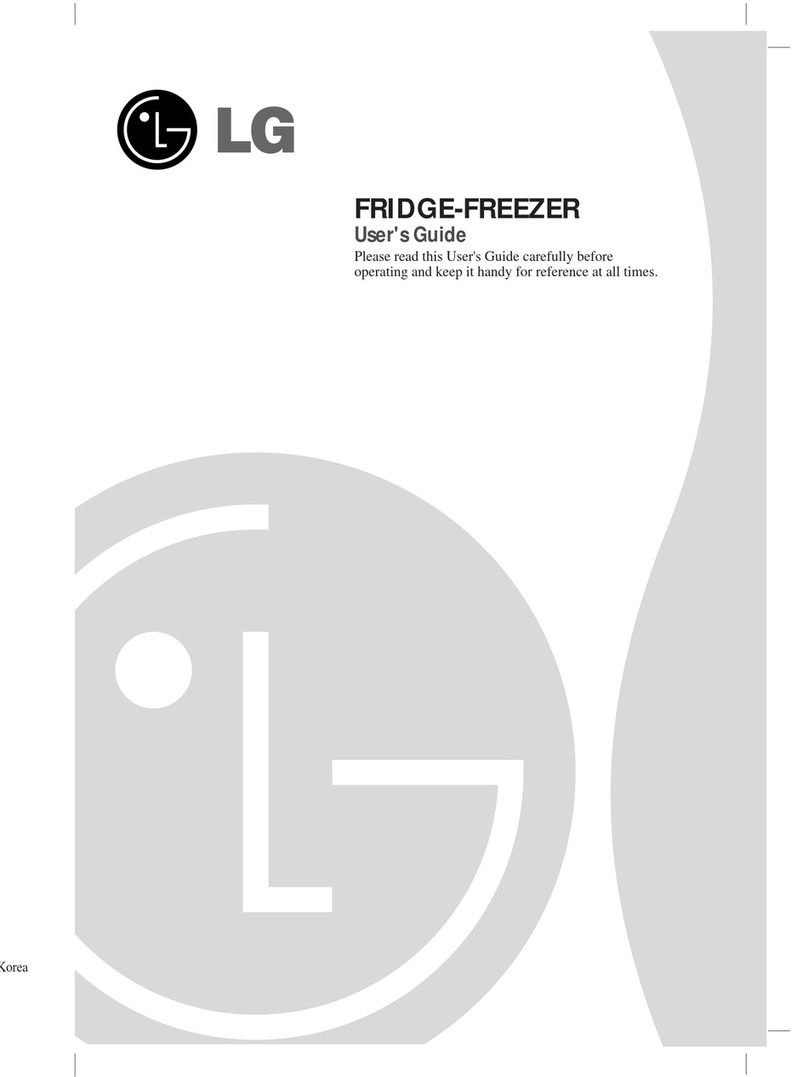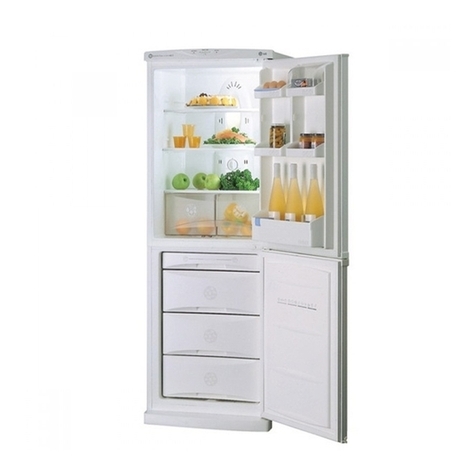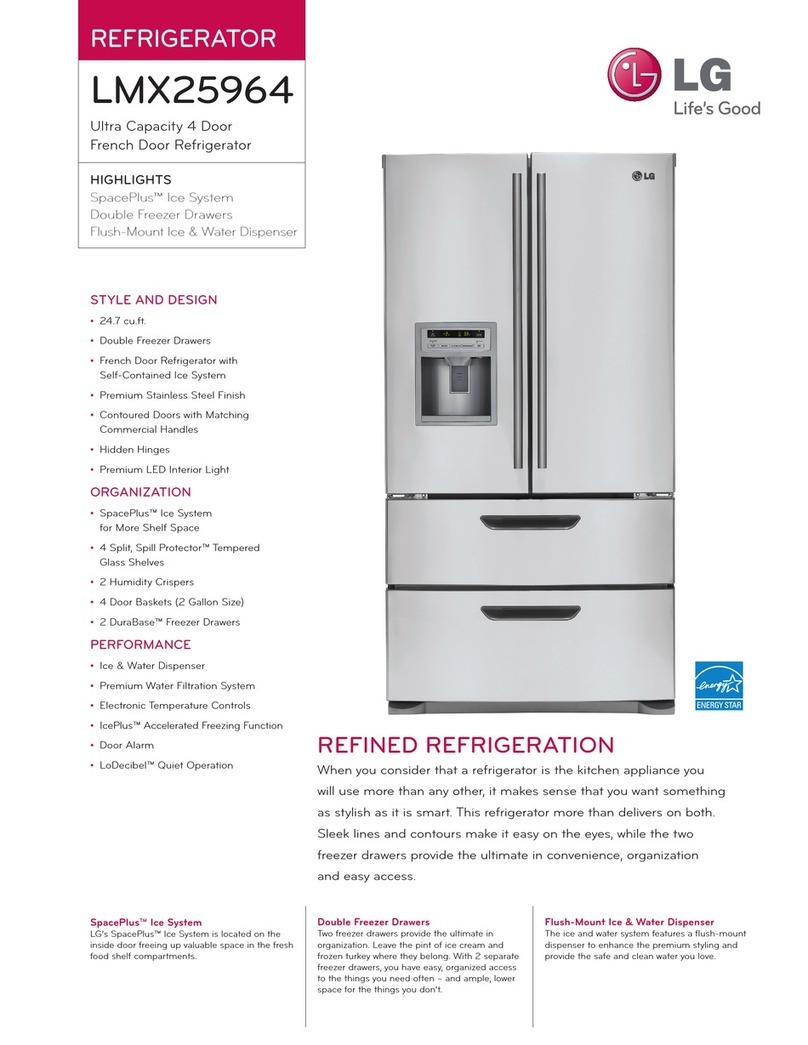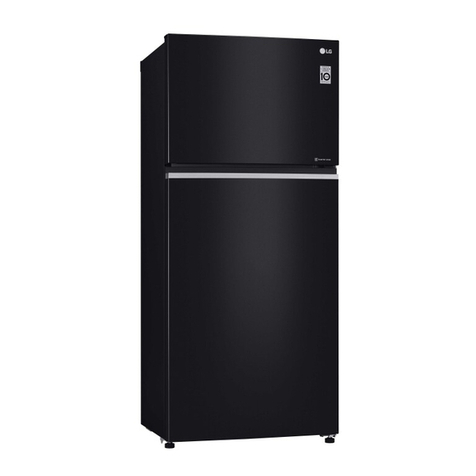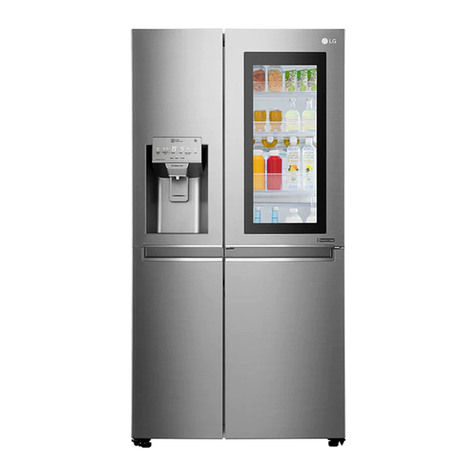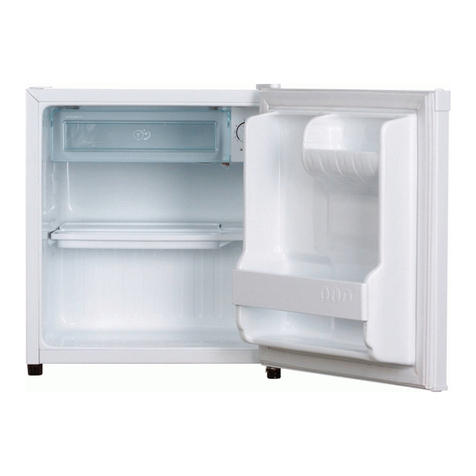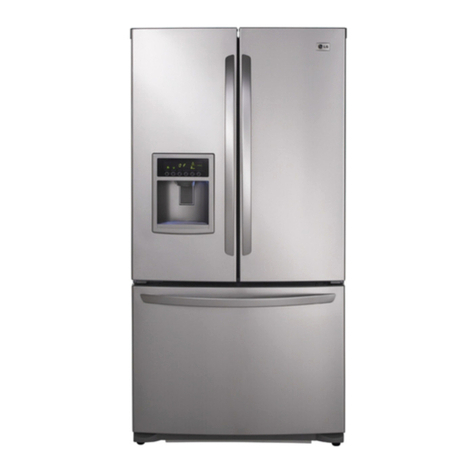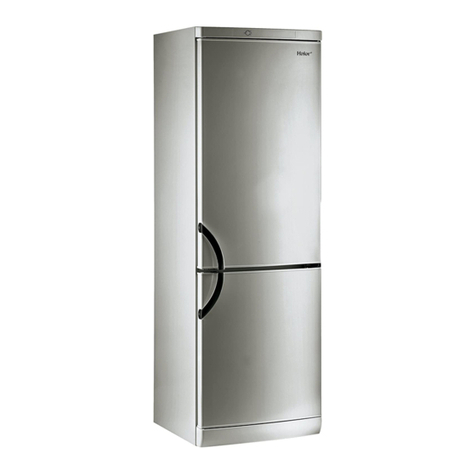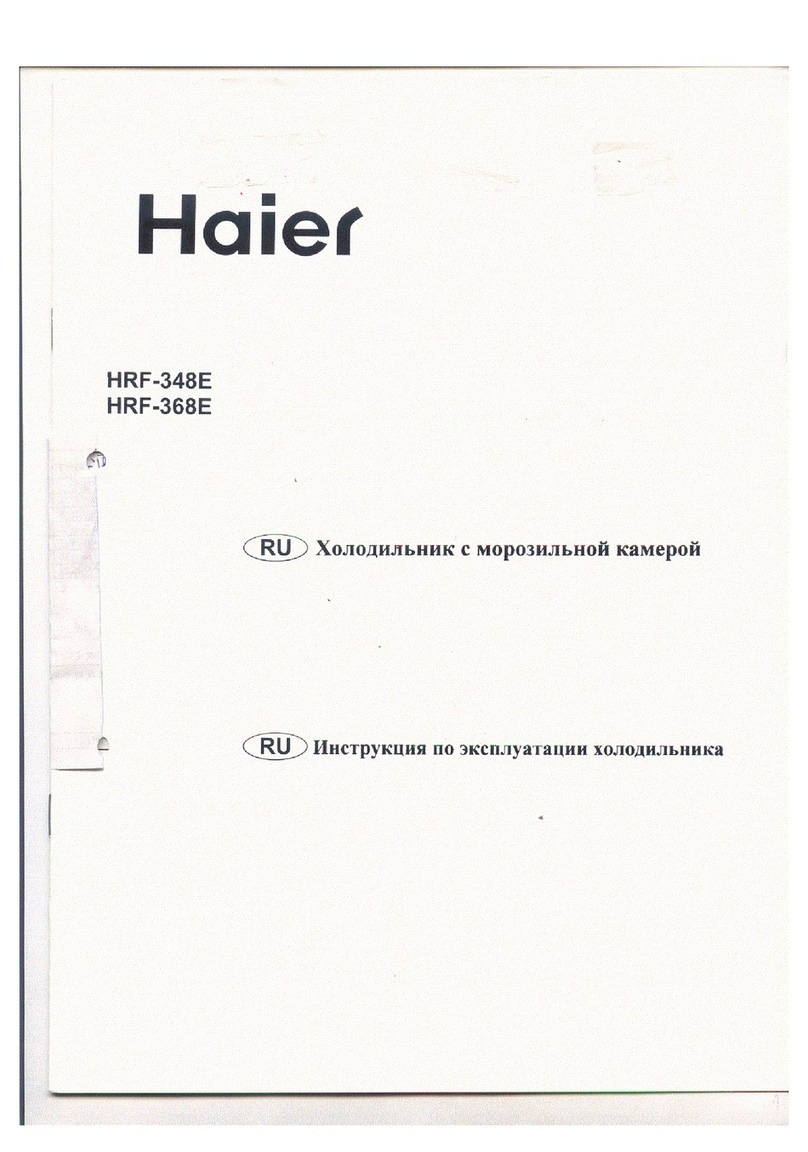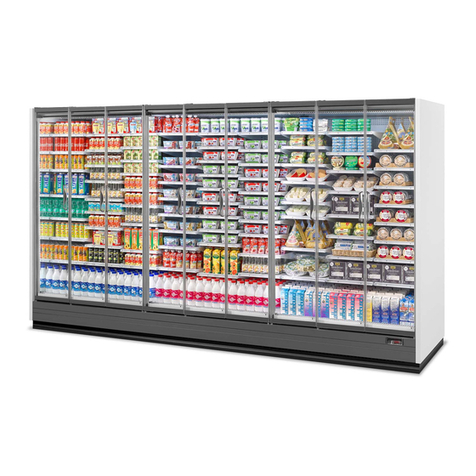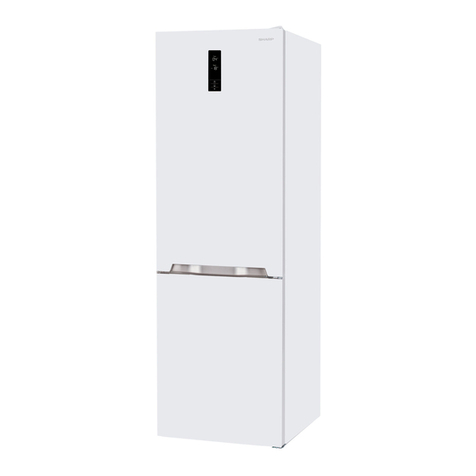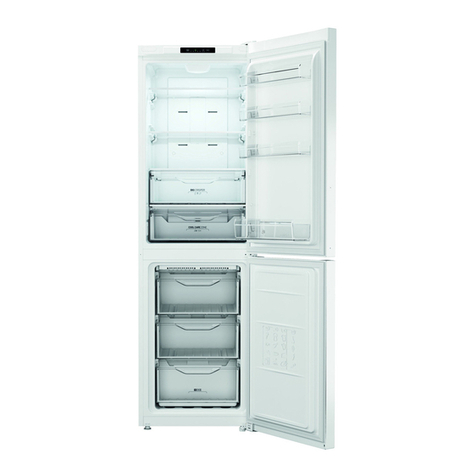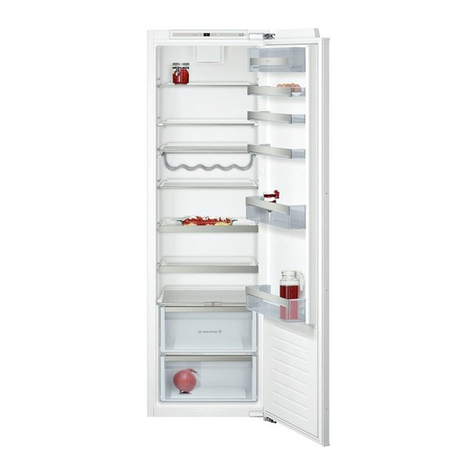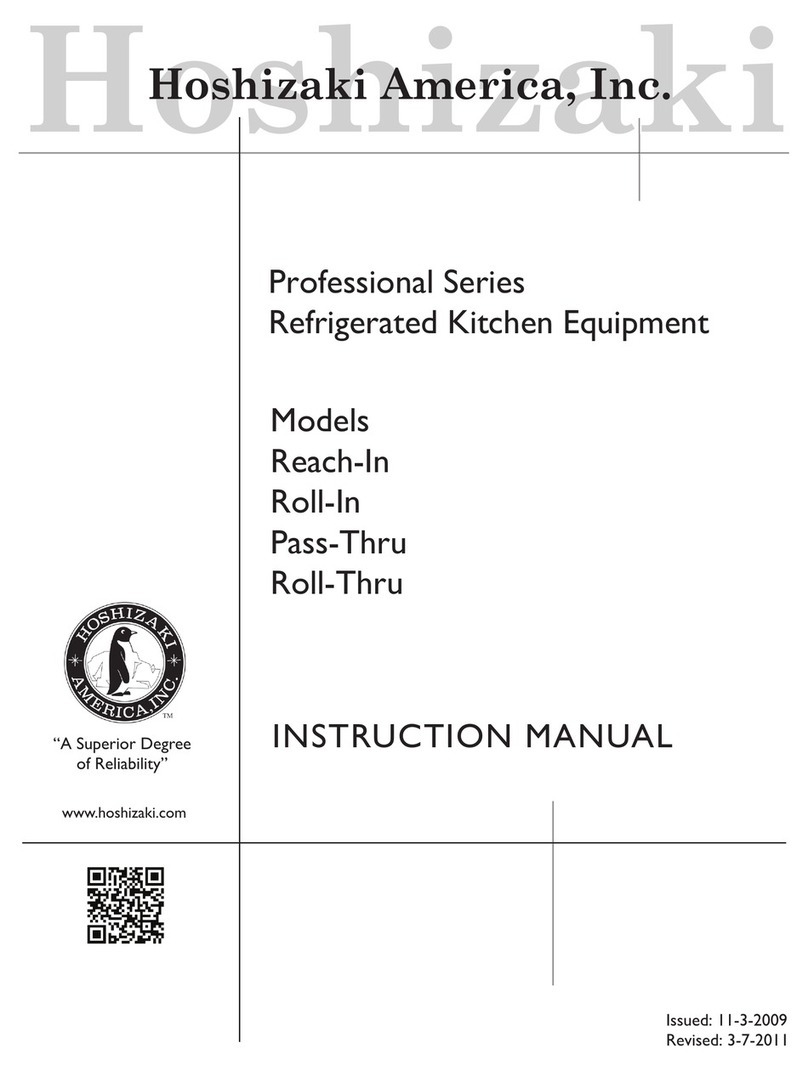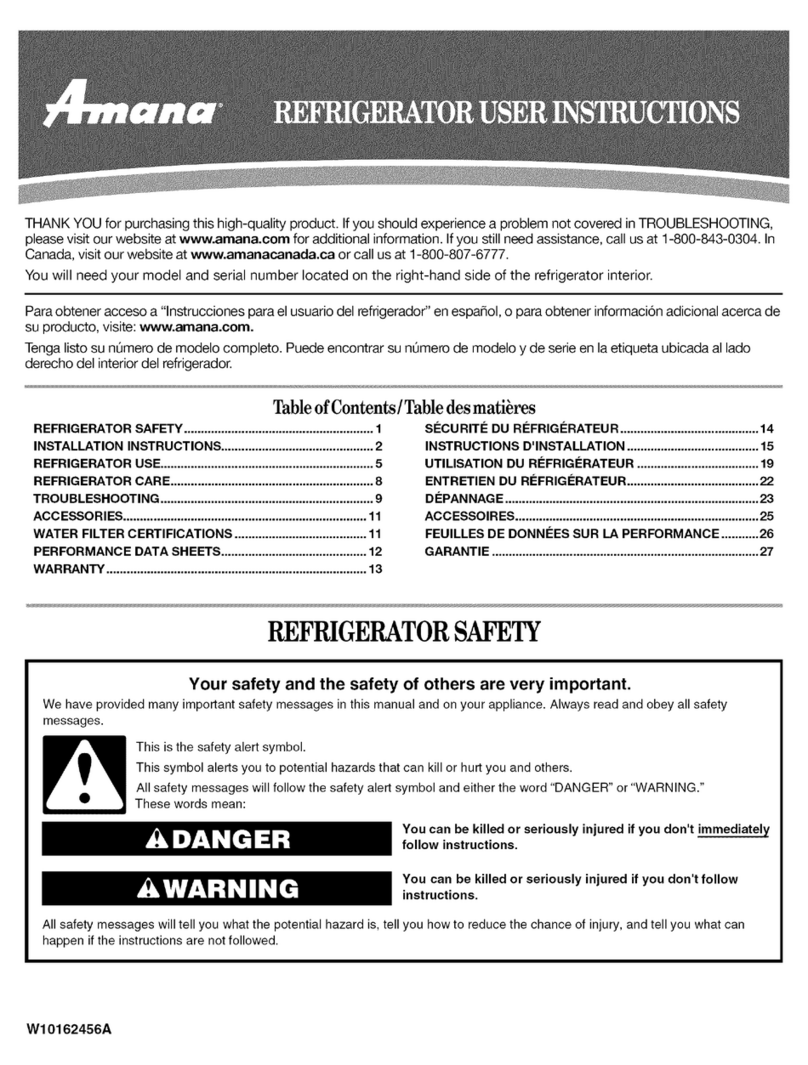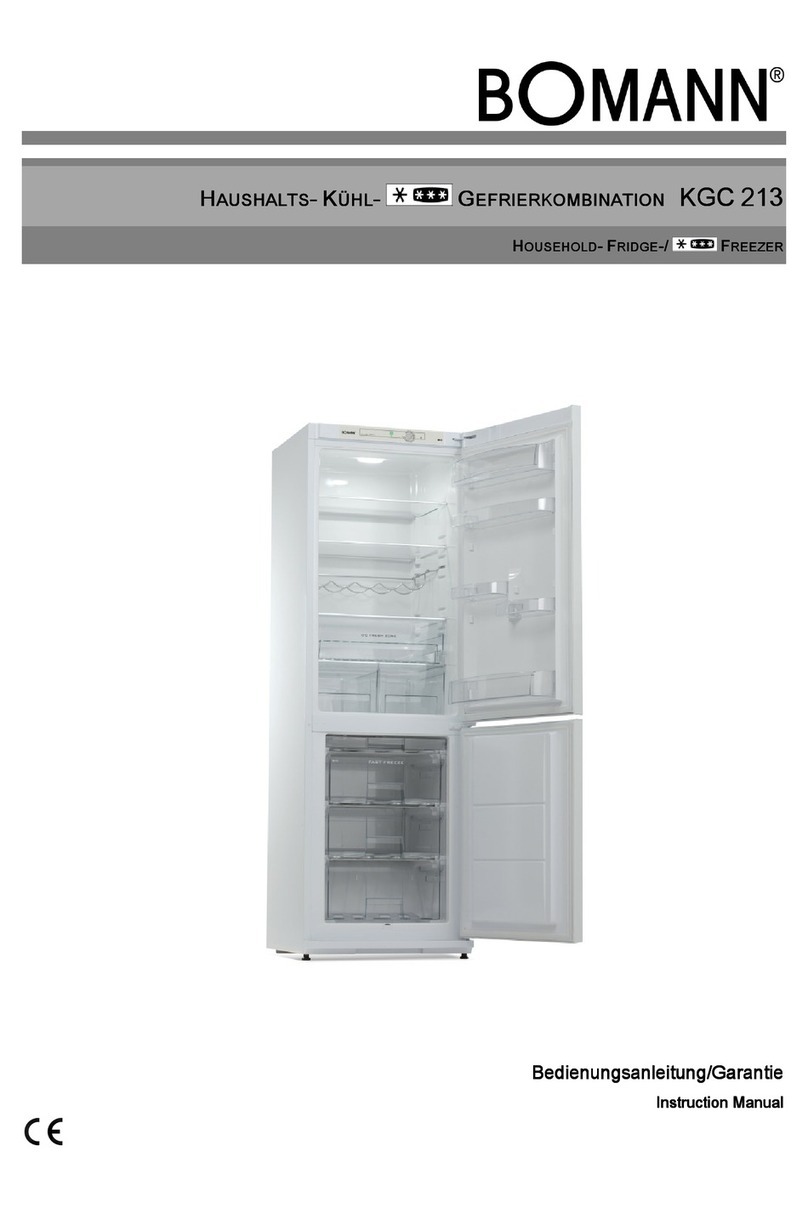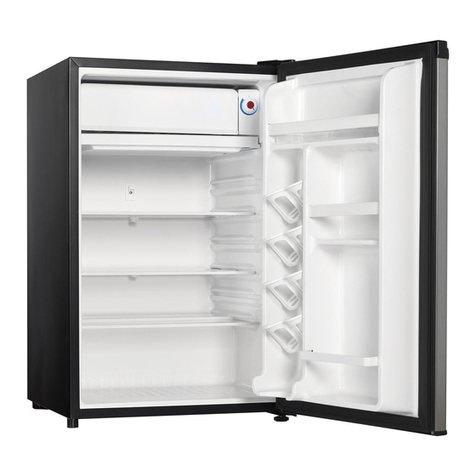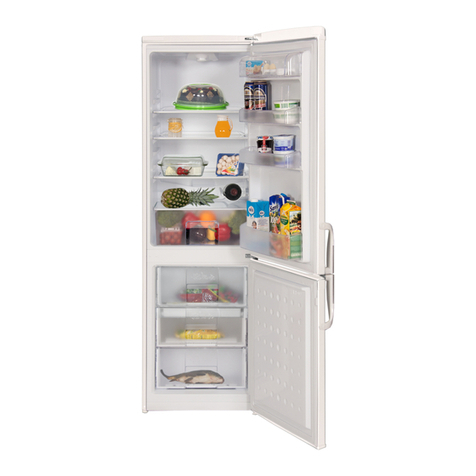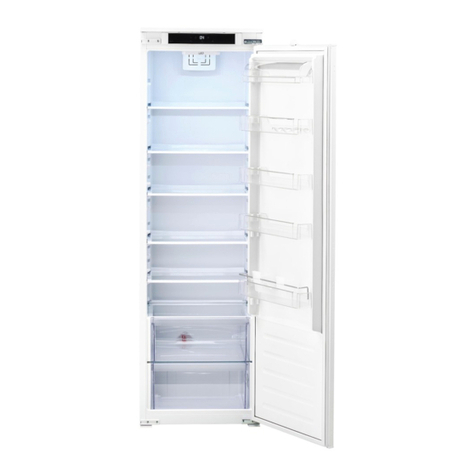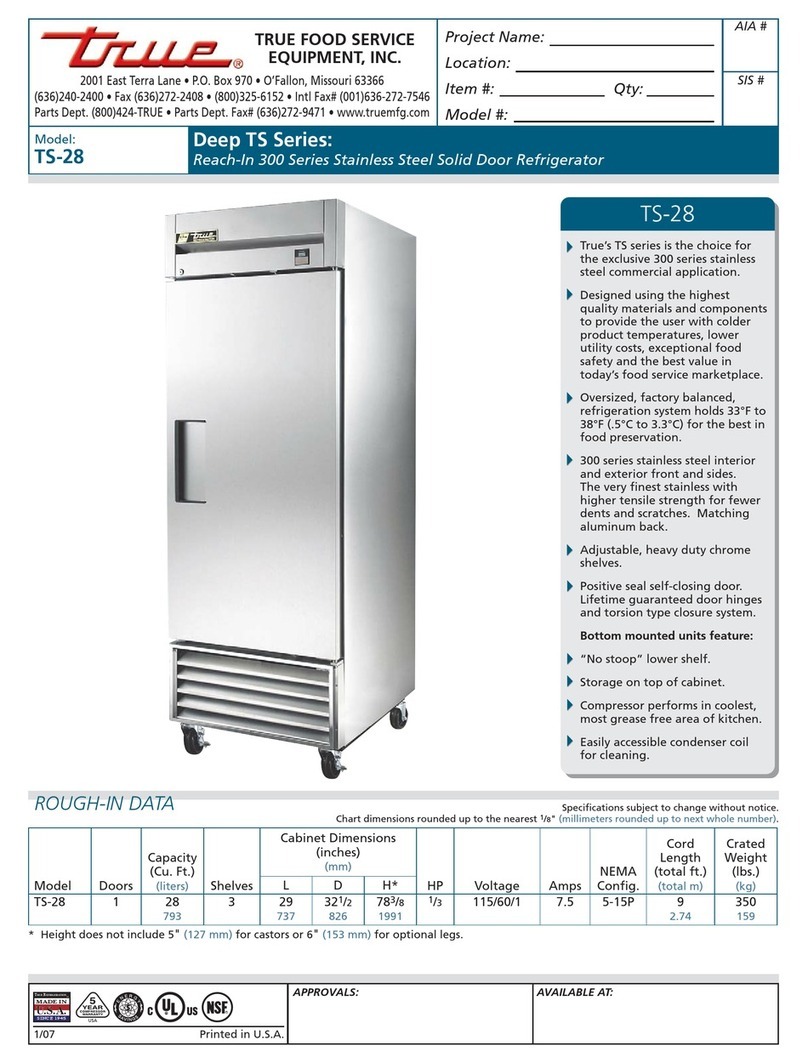4-1 COMPRESSOR
4-1-1 Role
The compressor intakes low temperature and low pressure
gas from the evaporator of the refrigerator and compresses
this gas to high-temperature and high-pressure gas. It then
delivers the gas to the condenser.
4-1-2 Composition
The compressor includes overload protection. The PTC
starter and OLP (overload protector) are attached to the
outside of the compressor. Since the compressor is
manufactured to tolerances of 1 micron and is hermetically
sealed in a dust and moisture-free environment, use
extreme caution when repairing it.
4-1-3 Note for usage
(1) Be careful not to allow over-voltage and over-current.
(2) If compressor is dropped or handled carelessly, poor
operation and noise may result.
(3) Use proper electric components appropriate to the
particular compressor in your product.
(4) Keep compressor dry.
If the compressor gets wet (in the rain or a damp
environment) and rust forms in the pin of the Hermetic
Terminal, poor operation and contact may result.
If the hermetic connector rusts out or fails, refrigerant
and oil will be expelled into the contact area, probably
resulting in smoke and fire.
(5) When replacing the compressor, be careful that dust,
humidity, and soldering flux don’t contaminate the inside
of the compressor. Contamination in the cylinder may
cause noise, improper operation or even cause it to
lock up.
4-2 TSD STARTER
4-2-3 PTC-Applied circuit diagram
● Starting method for the motor
4-2-4
4. ADJUSTMENT
- 10 -
Ð The TSD must not be applied to refrigeration systems with
defrosting electrical resistance or any other component in
parallel to the thermostat. Systems with this configuration
can maintain a residual voltage over the compressor when
the thermostat is opened, obstructing the proper functioning
of the TSD. It is vital f or the TSD circuit and compressor t o
remain completely de-energized after opening the
thermostat.
Ð Use of the fixing clamp is essential, as this prevents
disconnection or bad TSD contact in relation to the
compressor as well as to running capacitor in relation to the
TSD. The ones that assemble it have to guarantee a
perfect connection between the parts. Bad contacts and
sparking can burn out the electronic circuit.
Ð The electronic circuit was designed taking the mandatory
use of the running capacitor into consideration.
The 115V version is rect angular box, assembling directly
onto the TSD body .
Ð The plastic box was projected to offer protection against
contamination and mechanical shock normally present in
refrigeration system production lines.
Ð The TSD's internal components may undergo degradation
when in contact with chemical elements such as CI2,H
2S,
NH3,SO
X,NO
X. Some plastic isolation of cables may
release chemical elements when submitted to high
temperature conditions. Thus, check if the isolation of the
cables used on the terminal board are in accordance with
this recommendation.
Ð The TSD was designed for the operation with a run
capacitor and Embraco domestic compressor; any other
application must be previously evaluated by EmbracoÕs
technical team.
Ð Embraco reserves the right to check the customer's
handling of the manufacturing / assembly process,
indicating possible adjustments should any be required.
Ð After replacement, the compressor and itÕs accessories
must have proper processing, and the components must
be recycled according to the material group (ferrous,
non-ferrous, polymers, oils, ...) directives.
These recomendations are intended to minimize the
adverse impacts that may be caused to the environment.
